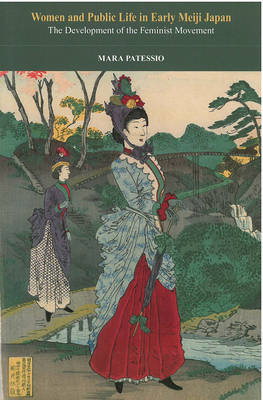
- Afhalen na 1 uur in een winkel met voorraad
- Gratis thuislevering in België vanaf € 30
- Ruim aanbod met 7 miljoen producten
- Afhalen na 1 uur in een winkel met voorraad
- Gratis thuislevering in België vanaf € 30
- Ruim aanbod met 7 miljoen producten
Zoeken
Women and Public Life in Early Meiji Japan
The Development of the Feminist Movement Volume 71
Mara Patessio
€ 42,45
+ 84 punten
Uitvoering
Omschrijving
Women and Public Life in Early Meiji Japan focuses on women's activities in the new public spaces of Meiji Japan. With chapters on public, private, and missionary schools for girls, their students, and teachers, on social and political groups women created, on female employment, and on women's participation in print media, this book offers a new perspective on nineteenth- and early twentieth-century Japanese history. Women's founding of and participation in conflicting discourses over the value of women in Meiji public life demonstrate that during this period active and vocal women were everywhere, that they did not meekly submit to the dictates of the government and intellectuals over what women could or should do, and that they were fully integrated in the production of Meiji culture.Mara Patessio shows that the study of women is fundamental not only in order to understand fully the transformations of the Meiji period, but also to understand how later generations of women could successfully move the battle forward. Women and Public Life in Early Meiji Japan is essential reading for all students and teachers of 19th- and early 20th-century Japanese history and is of interest to scholars of women's history more generally.
Specificaties
Betrokkenen
- Auteur(s):
- Uitgeverij:
Inhoud
- Aantal bladzijden:
- 240
- Taal:
- Engels
- Reeks:
Eigenschappen
- Productcode (EAN):
- 9781929280674
- Verschijningsdatum:
- 7/01/2011
- Uitvoering:
- Paperback
- Formaat:
- Trade paperback (VS)
- Afmetingen:
- 150 mm x 226 mm
- Gewicht:
- 340 g

Alleen bij Standaard Boekhandel
+ 84 punten op je klantenkaart van Standaard Boekhandel
Beoordelingen
We publiceren alleen reviews die voldoen aan de voorwaarden voor reviews. Bekijk onze voorwaarden voor reviews.











